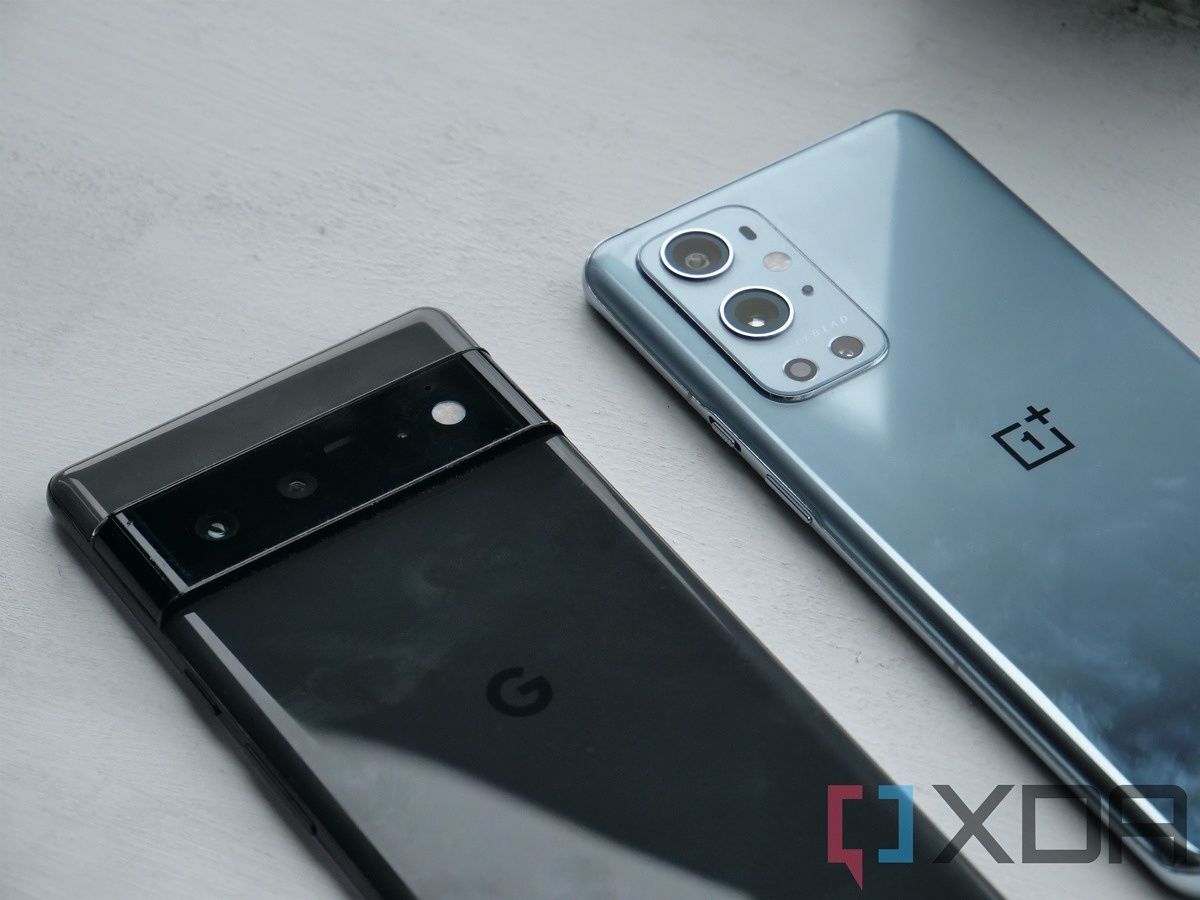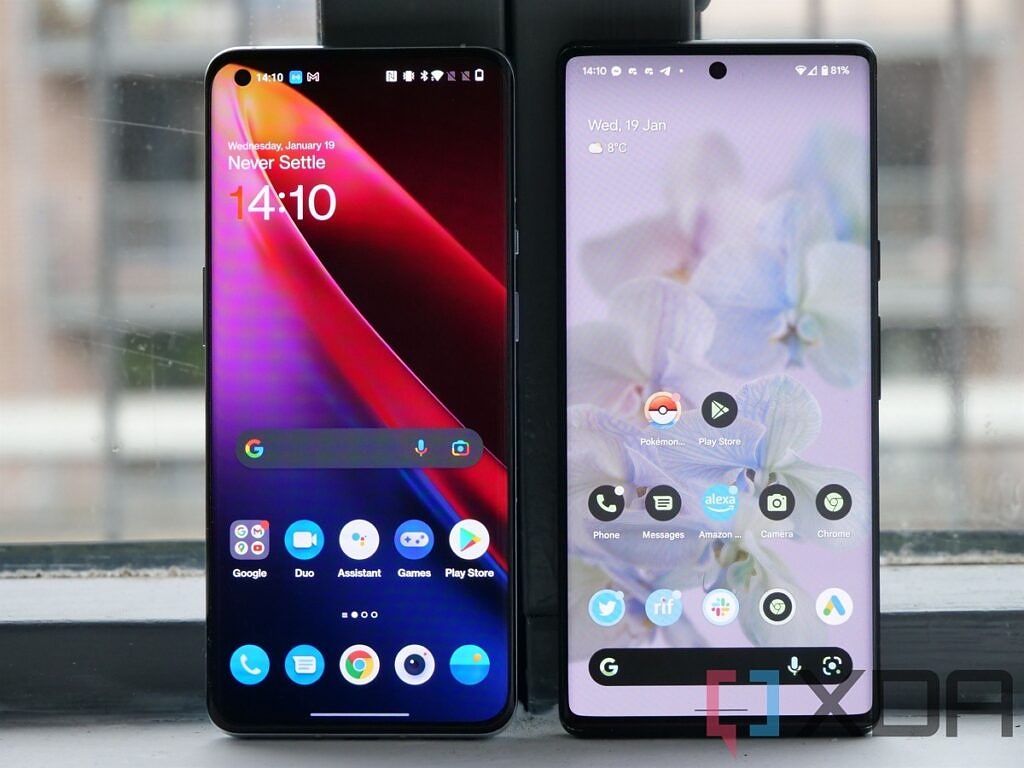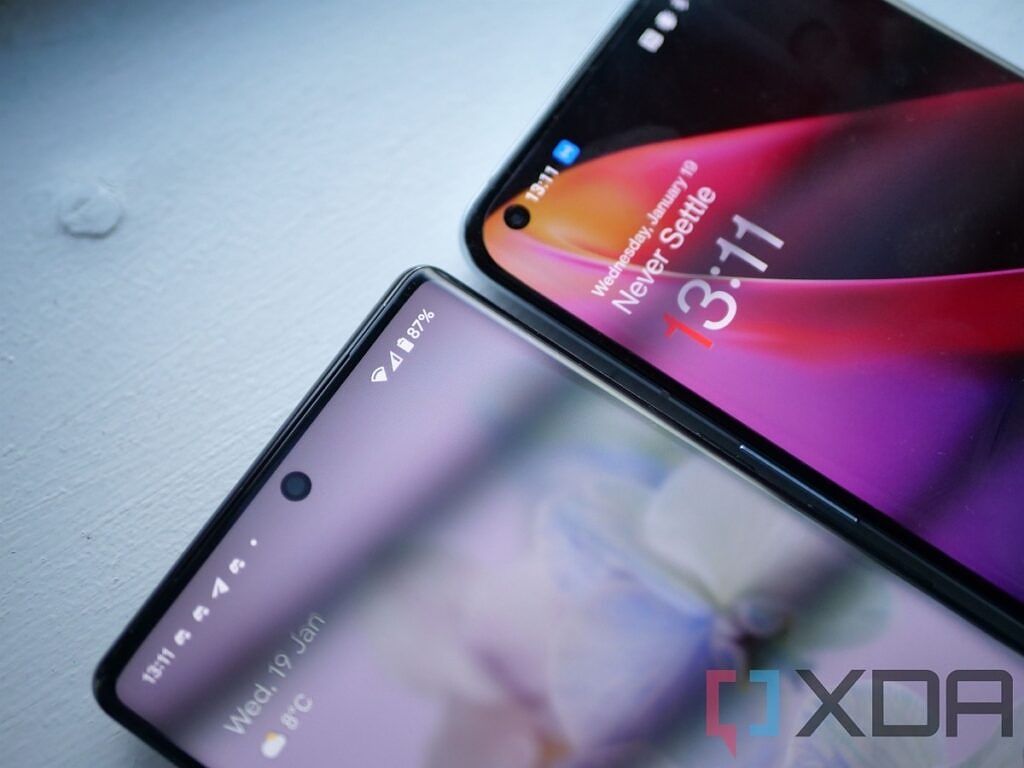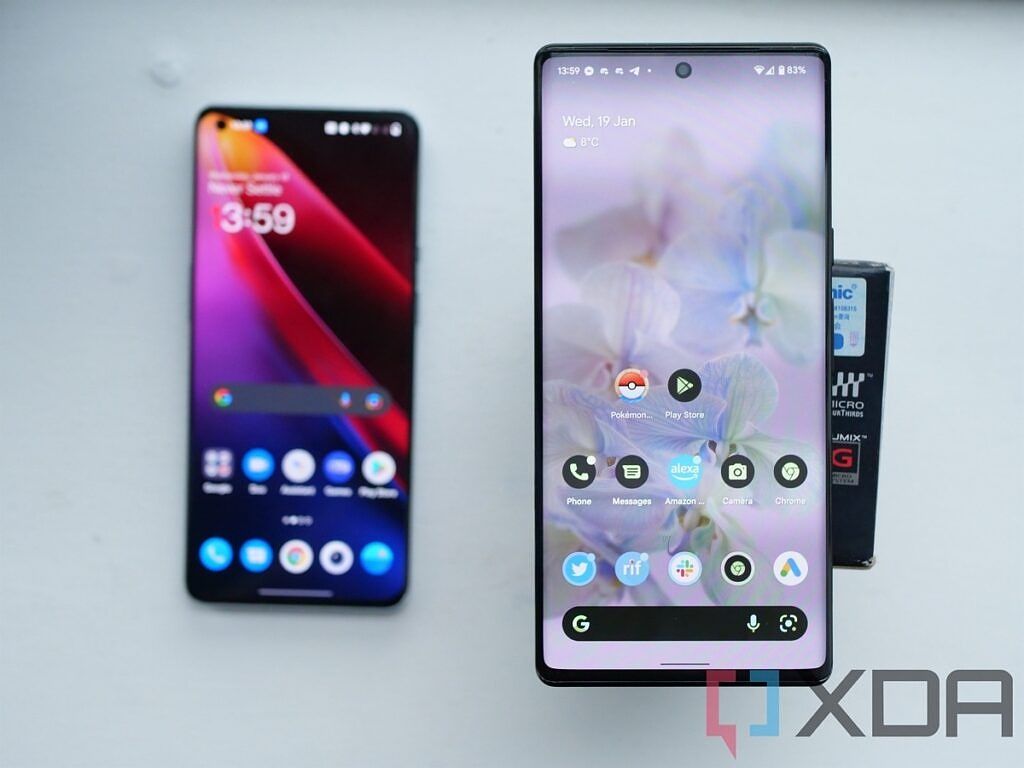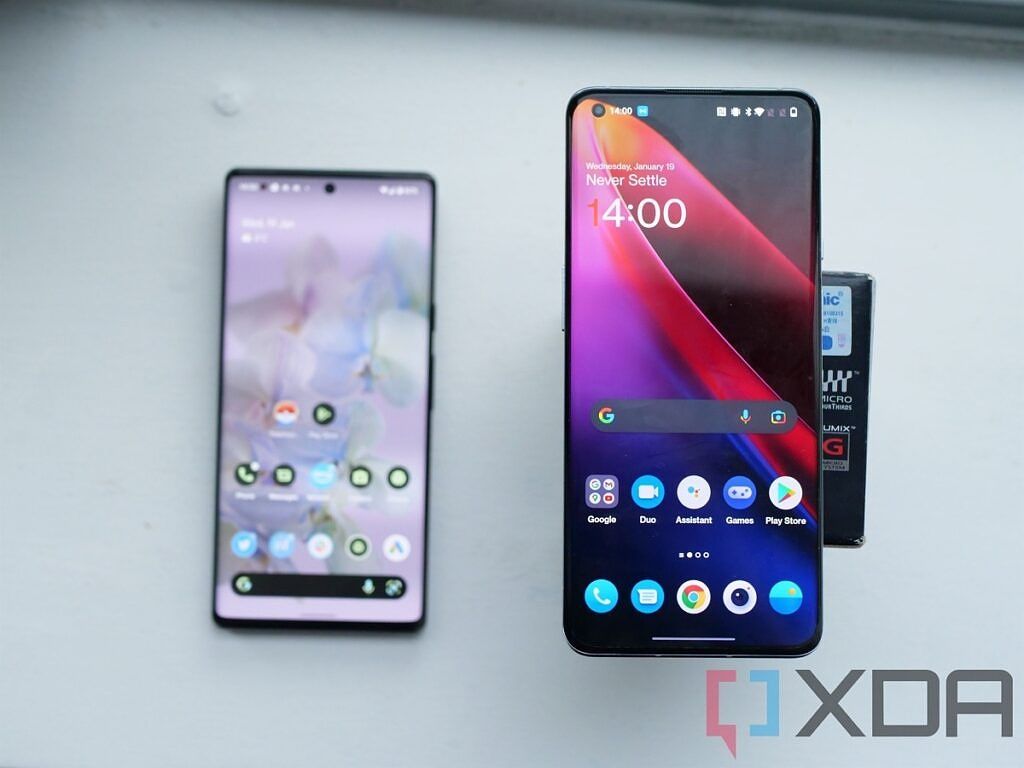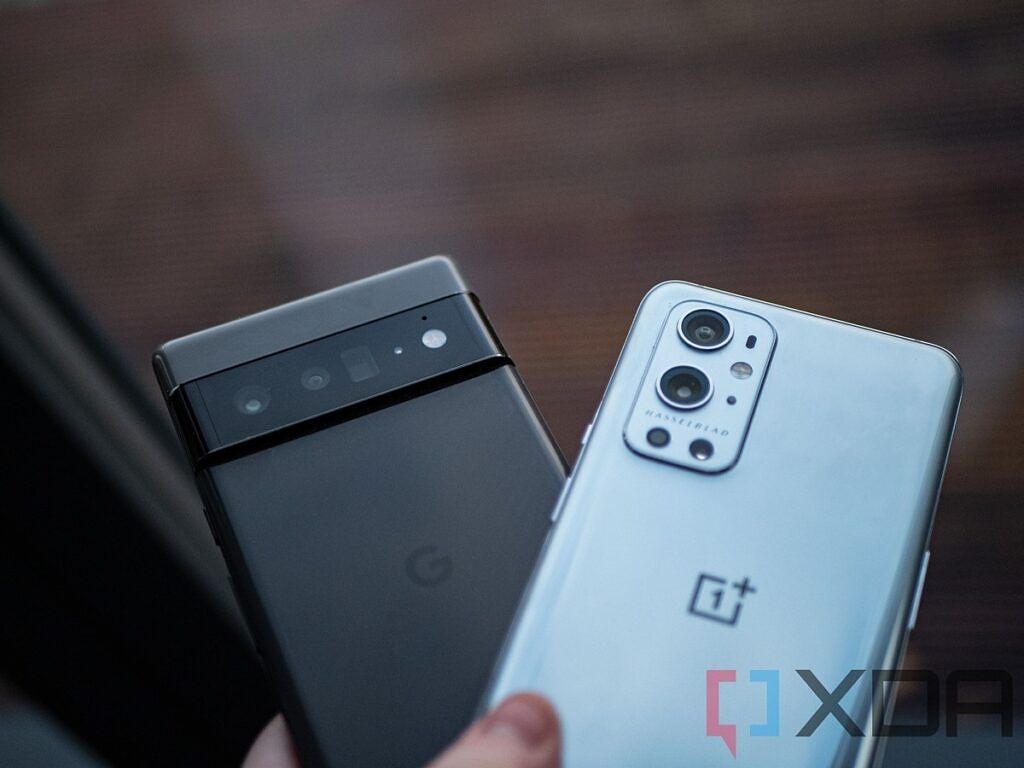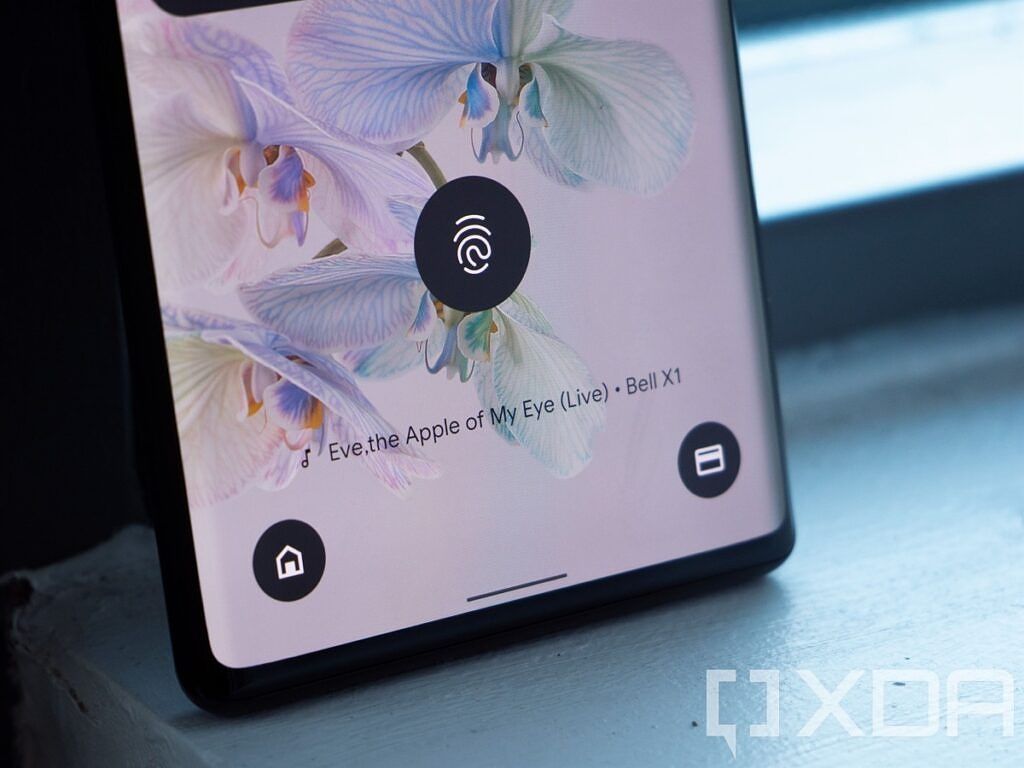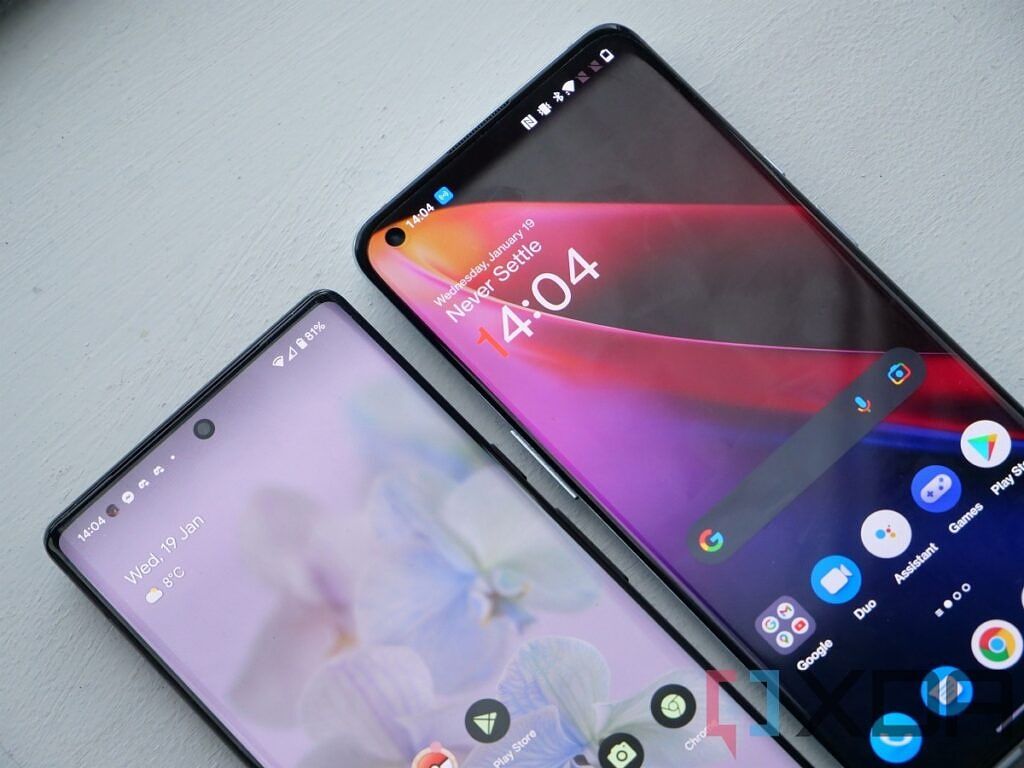We've entered 2022, but the next round of flagships are still a few weeks away. Even then, there's value to be seen from devices launched in 2021, especially when those devices are flagships such as the Google Pixel 6 Pro and the OnePlus 9 Pro. While the OnePlus 9 Pro has undoubtedly been marred in controversy ever since its Android 12 update, it's still a good device with a lot to give. The Google Pixel 6 Pro, meanwhile, has also had its own fair share of problems, failing particularly when it comes to software stability. Things are improving, but it's certainly taking a while.
With the OnePlus 9 Pro, you can avoid a lot of the problems that it has by upgrading to Android 12 and factory resetting if you end up having any. However, the company has pushed a new update which means you mightn't even need to do that. Meanwhile, the Google Pixel 6 Pro is a little bit outdated when it comes to security patches, as a combination of the holiday period, bugs, and the latest quarterly feature drop has resulted in what appears to be a difficult time for the developer team.
If you're in the market for a new phone, though, and you want it to be one of these, which should you go for? In this deep dive, we analyze the real differences between both the Google Pixel 6 Pro, the OnePlus 9 Pro, and find out which is better for you.
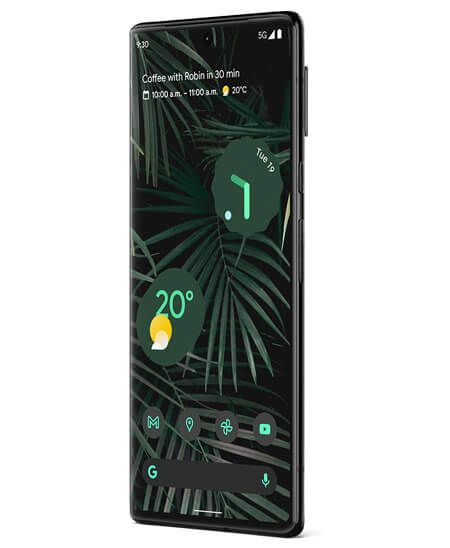
Google Pixel 6 Pro
The Pixel 6 Pro is the larger sibling that comes with Google's new Tensor chip, a modern design, and an extra telephoto camera.
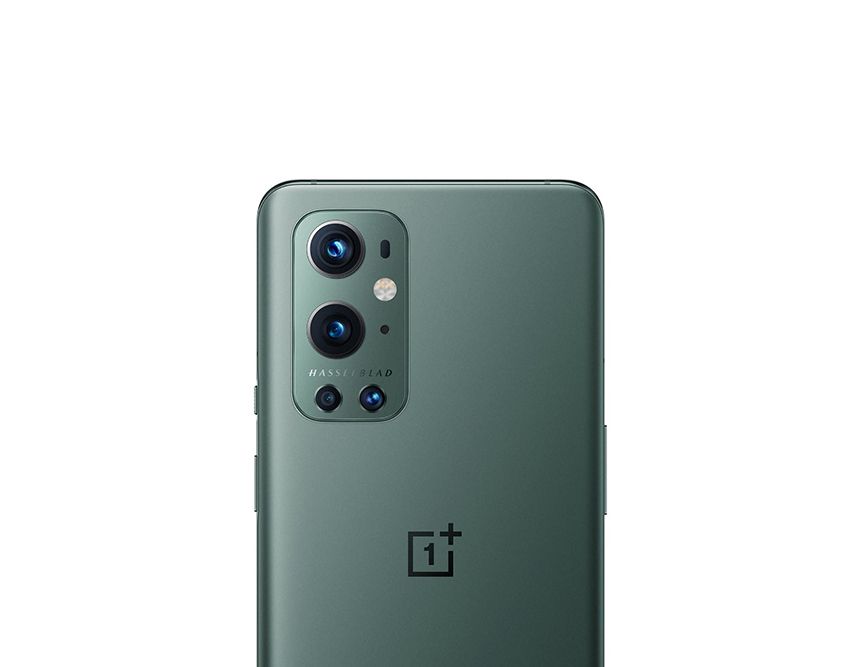
OnePlus 9 Pro
With a large, 6.7-inch Quad HD OLED display and a Smart 120Hz refresh rate, the OnePlus 9 Pro has a fantastic display for all kinds of contents. The cameras, tuned in collaboration with Hasselblad, produce excellent still photos.
About this review: This comparison was written after testing a Google Pixel 6 Pro sent to me by Google Ireland and a OnePlus 9 Pro sent to me by OnePlus U.K. Neither company had any input in this article.
Google Pixel 6 Pro vs OnePlus 9 Pro: Hardware
Design and Looks
The Google Pixel 6 Pro and the OnePlus 9 Pro are both extremely different phones in their designs. While OnePlus has slowly moved towards a more "mainstream" design in recent years, the same certainly cannot be said for Google. The Google Pixel 6 Pro has a more playful design coming in at 6.7-inches, with a camera bar on the back that sticks out. The OnePlus 9 Pro, on the other hand, is a more familiar design, with a camera module on the top left of the back of the device. Both phones have curved glass at the sides and curved glass on the back.
Both phones feel similar in hand, and both attract fingerprints pretty easily on the back -- the OnePlus 9 Pro especially so. As for the display, both devices feature 1440p 120Hz displays, though the OnePlus 9 Pro's display is a bit taller and slimmer than the Pixel's. The OnePlus 9 Pro display corners are also much more rounded, while the Google Pixel 6 Pro's corners are more subtle. The OnePlus 9 Pro panel also gets a lot brighter, though, in their quality, both are more than good enough for pretty much any content consumption.
To be honest, the main difference comes down to either display brightness or the punch hole. Display brightness typically matters a whole lot more in real-world usage, especially during the summer. As for the front-facing camera location, the punch hole on the OnePlus 9 Pro is on the left, whereas on the Pixel, it's in the middle of the notification bar. At that point, it's just personal preference as to which you prefer!
Camera Design and Camera Specs
The camera design is where both of these devices really differ, and the Google Pixel 6 Pro's camera bar has a few advantages. Its biggest advantage is its uniformity across the back means that the device doesn't rock a table, while also retaining a unique look that can't be found on any other device. If the camera bump bothers you that badly, any of the best Google Pixel 6 Pro cases will do away with it.
In the case of the OnePlus 9 Pro though, it's rather basic and doesn't really offer anything original. It pokes out a small bit, which can be rectified with either the included case or any other of the best cases for the OnePlus 9 Pro.
As for camera specifications, OnePlus partnered with Hasselblad for its color science on the OnePlus 9 Pro, and it's capable of some pretty nice shots. It's the best camera in a OnePlus smartphone for sure, especially as the company's smartphone cameras were, at best, considered mediocre prior. Eventually, the partnership is expected to evolve into custom hardware including custom lenses. We’re not at the point yet where OnePlus is using custom Hasselblad lenses, but the OnePlus 9 Pro does feature a new color solution applied to all image sensors called Natural Color Calibration with Hasselblad and a Hasselblad Pro Camera mode.
In addition, this OnePlus smartphone debuted Sony’s IMX789 image sensor for the main camera. It’s a 48MP image sensor with Sony’s 2×2 on-chip lens solution, supports 12-bit raw capture, and is paired with an optical image stabilizer module to stabilize user-induced motion. The secondary camera features Sony’s IMX766 image sensor that’s also found in both cameras on the OPPO Find X3 Pro, which we praised for producing superb wide-angle shots. The IMX766 is paired with a freeform lens for distortion-free ultra-wide-angle photos and macro photography as close as 4cm from the subject. Finally, there's also an 8MP telephoto camera for 3.3x optical zoom, stabilized by OIS.
When it comes to the Google Pixel 6 Pro though, it's an entirely different beast. Pixel smartphones are known for their cameras, and the Pixel 6 Pro is no different. It features a 50MP Samsung GN1 camera and a 12MP Sony IMX 386 ultra-wide lens, along with an additional 48MP Sony IMX 586 for 4x optical zoom. The IMX 386 is a very old sensor and suffers from noise particularly in low-light conditions.
The Google Pixel 6 Pro is a much more compelling buy for its camera
Overall, the ultra-wide-angle camera is much weaker than what's in the OnePlus 9 Pro, but the rest of what's on offer (along with Google's camera smarts) makes the Google Pixel 6 Pro a much more compelling buy for its camera. It handily beats the OnePlus 9 Pro when it comes to photos, but that's not to say the OnePlus is bad -- it's just that Google is hard to compete with. If a camera is your prerogative, then the Google Pixel 6 Pro is a no-brainer. It's one of the few parts where it truly wins out.
Google Tensor vs Snapdragon 888
Google Tensor is the company’s first custom mobile chipset, and it’s made specifically for the Google Pixel 6 Pro. The difference between Tensor and any other Qualcomm chip is that Tensor is made for the software, and the software is made for Tensor. This chipset isn’t being used anywhere else, and it’s specifically created for use on the Pixel 6 series.
Tensor, according to Google, was uniquely developed and optimized. The company says that all of the individual components of this chip are optimized as one cohesive unit, rather than individually optimized parts working together. In other words, the chipset is aiming for operations to be divided evenly across the entire chip with all parts working together. Google also mentioned that optimizing individual parts may grant better peak CPU and GPU speeds which will look great in benchmarks, but they “don’t always reflect real-world speed”.
In contrast, a chipset like the Qualcomm Snapdragon 888 in the OnePlus 9 Pro is designed to be used on many devices and is sold to a wide swathe of device manufacturers. The software can be tailored to the hardware, but the chipset will never be designed and tailored specifically to the manufacturer’s vision if it deviates from what Qualcomm provides. Having said that, the OnePlus 9 Pro is a smooth and powerful smartphone, regardless of what Google tries to tell you. Both devices hold up well and can be used as flagships, and most users likely won't notice a difference.
Google Pixel 6 Pro vs OnePlus 9 Pro: Software
Pixel Experience
The Google Pixel line of devices has something unique about it when it comes to software, and that's Google's custom spin on Android. Contrary to popular belief, Google Pixels don't run stock Android, and instead, run a customized version of Android with additional features and changes. While Google doesn't really have an official name for it, I'll be using the term "Pixel Experience" for brevity's sake.
Pixel smartphones have some killer features
Pixel smartphones have some killer features, and two of my favorites are music identification and voice dictation. Google's song identification always works in the background, identifying music that plays around you and saving a history that can later be saved to a YouTube Music playlist or played individually on other services such as Spotify. It sits on your lock screen, and if a song is playing that your phone can't recognize, you can tap a button shown at the bottom middle to use a Shazam-like service (powered by Google) that accesses the cloud to do so.
As for voice dictation, it's a feature powered by Google Tensor and allows you to type with your voice much, much faster than conventional voice recognition software. It works entirely offline and is a whole lot quicker too, and I use it all the time. It's an incredibly useful feature and not one that I thought I would make as much use of as I currently do.
Other features include Material You, which is by far the biggest change in Android 12. It's not available on other devices yet (though expected to arrive with Android 12L) and I’m a massive fan of it. Material You update is one of the biggest UI changes to Android in years. It automatically generates a color palette for the system based on the user’s wallpaper and themes throughout the entire system. Pretty neat.
However, one major issue with the Google Pixel 6 Pro has been the sheer number of bugs. I've had a lot of problems, including hard reboots, apps freezing, frequent pop-ups telling me that System UI isn't responding, and more. Google even had to delay the January 2022 update as a result of significant problems introduced in the canceled December 2021 update, so it appears that the company has a long way to go yet before this phone's software is completely polished and close to bug-free.
OxygenOS
OnePlus is in a bit of a weird spot when it comes to software at the moment, as OxygenOS 12 is blatantly based on ColorOS from OPPO's smartphones. There were a ton of problems for people who updated to OxygenOS 12 from OxygenOS 11, though a lot of those issues have been ironed out now. The highlights of OxygenOS 12, other than the rebase to Android 12, are a few new quality of life features and improvements, such as the always-accessible Shelf from the notifications bar. The next major update for the OnePlus 9 series will ship the unified operating system that combines the best of both OxygenOS and ColorOS, and that operating system will also ship on the next OnePlus flagship.
As it stands though, OxygenOS 12 doesn't really have any unique features that I actively make use of. It looks nice and it's quick to use, but there are no stand-out features that I find myself missing when I use another smartphone. It's pretty barebones, but maybe that's exactly the kind of smartphone you're looking for.
There are no stand-out features that I find myself missing when I use another smartphone
Just keep an eye out for bugs.
Google Pixel 6 Pro vs OnePlus 9 Pro: Performance
Remember when I said that most users likely won't notice a difference in performance? Emphasis on most. If you're a power user, you'll almost certainly want to pick up the OnePlus 9 Pro over the Google Pixel 6 Pro. Not only does it have higher peaks (especially in multi-core), but it can also sustain its performance for longer.
Overall, the Google Pixel 6 Pro is a disappointing buy if what you're looking for is raw performance.
As for gaming, well, that's no contest. The Adreno GPU in the OnePlus 9 Pro will smoke the Google Tensor's Mali GPU, especially in bigger titles such as Genshin Impact. That's not to say you can't game on your Google Pixel 6 Pro -- you absolutely can -- but you'll want to be mindful of thermals and the battery drain.
Overall, the Google Pixel 6 Pro is a disappointing buy if what you're looking for is raw performance. You're almost certainly better off looking elsewhere, and that elsewhere is likely to be the OnePlus 9 Pro.
Benchmarks
The tests conducted to compare these two devices in raw performance come from a mixture of Geekbench 5 and CPU Throttling Test, both apps that are available on the Google Play Store. CPU Throttling Test was run for half an hour on both devices, though keep in mind that the temperature readings shown above are completely inaccurate.
The Google Pixel 6 Pro's impressive single-core score is extremely short-lived in pretty much any long-term benchmark. Observe how the CPU throttles to 57% of its maximum performance over a thirty-minute period -- and that maximum performance is still below that of the OnePlus 9 Pro. The Google Pixel 6 Pro was consistently much better than this at launch but struggles now when running this test, though I would argue that its overall performance in day-to-day usage is significantly improved.
When it comes to emulation as well, don't even bother with anything newer than the Nintendo Wii. I had some success with AetherSX2, though the phone heated up significantly, and Wii and GameCube games begin to struggle quickly thanks to the aggressive thermal throttling. You'll have no problems with the likes of Nintendo DS emulation, but that's about it.
Overall, your mileage may vary. In contrast, the OnePlus 9 Pro is one of the best performing devices on the market currently and sustains its performance exceptionally well. Not only that, it packs the second-best GPU that you can get in a smartphone right now, making it an even better buy for gamers.
Having said all of that, phones are more than just benchmarks, and the Google Pixel 6 Pro feels just as smooth (if not smoother) as the OnePlus 9 Pro in normal day-to-day usage. Scrolling Twitter, browsing Reddit, sending messages -- all of it goes without a hitch. If that's all you use your phone for, then you certainly won't have any performance problems.
Gaming
Anybody familiar with both of these chips knows exactly what to expect when it comes to gaming. While the Google Pixel 6 Pro is capable of playing some games at a reasonably high graphical fidelity, it's no match for the Adreno GPU in the Snapdragon 888. Both of the charts above were recorded in our reviews of the OnePlus 9 Pro and the Google Pixel 6 Pro, and there's a clear winner here. The Pixel is no match for the OnePlus device, though that was to be expected.
Battery Life and Charging
The battery life of the Google Pixel 6 Pro was disappointing, though the same can be said for the OnePlus 9 Pro, too. I get, at maximum, five hours of screen on time with some heavy usage on the Google Pixel 6 Pro. Typically, it's more like four hours. That same usage could easily net me six to seven hours of usage on the Google Pixel 5, and the OnePlus 9 Pro isn't really that much better.
Where the OnePlus 9 Pro has an advantage though is its charging speed. It can charge up in just over half an hour thanks to the included 65W charger in the box (you don't get one of those either with the Google Pixel 6 Pro) whereas half an hour of charging the Pixel will only get you up to 50%. From there, it'll take another hour and a half to get to 100%, making the charging experience a complete pain.
Both of these devices have mediocre battery life
In other words, even though both devices have mediocre battery life, you'll at least get charged up a whole lot quicker with the OnePlus 9 Pro in a pinch. For that reason alone, it's pretty easy to choose the OnePlus 9 Pro over the Pixel in that regard. If you're out and about a lot and find yourself struggling to find the time to sit by a charger throughout your day, then the OnePlus 9 Pro is definitely a device worth checking out.
Google Pixel 6 Pro vs OnePlus 9 Pro: Miscellaneous
Speakers and Call Quality
The Google Pixel 6 Pro has a pair of dual stereo speakers, with the top speaker in the earpiece being quieter than the bottom-firing speaker. They're nothing to write home about, but then again, these are smartphone speakers. They work, they get decently loud, and they're about as good as it gets for a smartphone.
With the OnePlus 9 Pro, you get a pair of stereo speakers with Dolby’s Atmos software baked in. You can’t tune the audio much to your liking, though you can choose between three preset “scenario-based enhancements.” Again, it's the same thing; they're smartphone speakers. They do the job.
As for call quality, both phones are fine for taking phone calls on. You can hear the other person, and the other person can hear you clearly and loudly. No complaints here for either device.
Signal Reception
Signal reception is an interesting comparison here because the Google Pixel 6 Pro has had numerous issues in that regard. The Exynos modem isn't as good as what you get on Qualcomm devices, and I've noticed this myself ever since receiving the Pixel. To make things even worse, Google hampered the Pixel 6 Pro's signal strength for many with the introduction of the December 2021 update, to the point that the company had to pull the update. While my signal strength remained unchanged when I sideloaded the update, that problem affected a lot of people. If you find yourself lacking in signal strength on your current device, it might be worth considering looking elsewhere.
Google Pixel 6 Pro vs OnePlus 9 Pro: Conclusion
The Google Pixel 6 Pro and the OnePlus 9 Pro are two very different devices for two very different types of people. If your prerogative is to have one of the fastest phones on the market at all costs, then the OnePlus 9 Pro is undoubtedly the winner here. The chipset pushes past most of what Google Tensor is capable of when it comes to gaming and raw computational power, leaving little to be said for whatever Google has on offer currently.
However, if what you're looking for is a smartphone that's capable of it all, with quick updates and long-term software support, then the Google Pixel 6 Pro is more likely to be up your alley. Previously, I would have said that you will likely not come across problems introduced by software updates such as the ill-fated OxygenOS 12 update, but the Google Pixel 6 Pro's rough start since its launch has prevented me from being able to make that quip.
Nevertheless, it's unlikely that Google will reintroduce problems in a future software update, and the company's previous smartphones have generally remained pretty stable post-launch. With the promise of a unified OS coming to the OnePlus 9 Pro in its next major update, it's unclear if we'll have another OxygenOS 12-style situation when that rolls out.
For me personally, I'm using the Google Pixel 6 Pro as my daily driver, and I have done since its launch. It's a great phone though has enough issues that I'm looking forward to switching off of it and trying something new. It does everything that I want, and as someone who loves to take photos and listen to music on my smartphone, the Android 12 experience on the Google Pixel 6 Pro will still likely remain my favorite whenever I move to another device.
As it is right now, the Google Pixel 6 Pro remains a niche device for techies and Android fans, and the same can be said for OnePlus as well. While OnePlus is seeing rapid growth globally, the majority of consumers are more likely to veer towards the likes of Samsung, Apple, or Xiaomi. There are some great deals for the Google Pixel 6 Pro and the OnePlus 9 Pro, so honestly, it may come down to whichever you can find cheapest.

Google Pixel 6 Pro
The Pixel 6 Pro is the larger sibling that comes with Google's new Tensor chip, a modern design, and an extra telephoto camera.

OnePlus 9 Pro
With a large, 6.7-inch Quad HD OLED display and a Smart 120Hz refresh rate, the OnePlus 9 Pro has a fantastic display for all kinds of contents. The cameras, tuned in collaboration with Hasselblad, produce excellent still photos.

